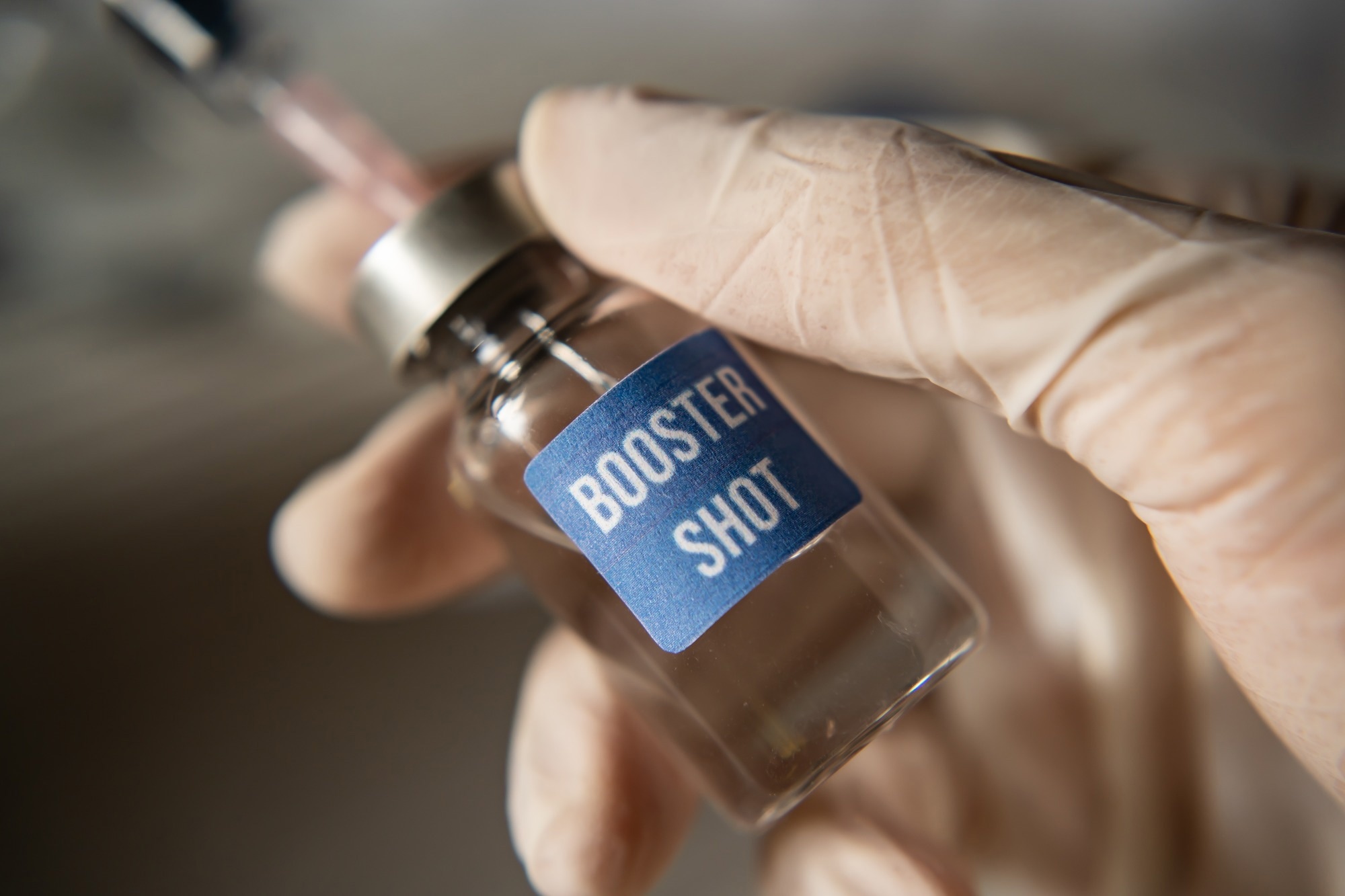Study reveals Pfizer bivalent COVID-19 booster safer for seniors against stroke risk compared to other vaccines

In a recent article published in Npj Vaccines, researchers examine the comparative hazard of ischemic stroke (IS) in recipients of booster shots of the coronavirus disease-2019 (COVID-19) bivalent vaccines or monovalent vaccines aged ≥65.
 Study: Ischemic stroke after COVID-19 bivalent vaccine administration in patients aged 65 years and older in the United States. Image Credit: Wachiwit/Shutterstock.com
Study: Ischemic stroke after COVID-19 bivalent vaccine administration in patients aged 65 years and older in the United States. Image Credit: Wachiwit/Shutterstock.com
Background
The Centers for Disease Control and Prevention (CDC) announcement that the Pfizer bivalent COVID-19 vaccine increases the risk of IS within three weeks of receipt was unanticipated as they raised no concern regarding the receipt of the Moderna bivalent vaccine previously.
Moreover, the Food and Drug Administration (FDA) and European Medicines Agency (EMA) have found no higher IS risk for the Pfizer bivalent vaccine.
It may, thus, represent the higher prevalence of pre-existing comorbidities (IS risk factors) among patients who received the Pfizer bivalent versus monovalent booster.
Nonetheless, there is a need to examine the comparative hazard of IS among recipients of bivalent and monovalent COVID-19 vaccines in response to these inconsistent reports by important health agencies and given their wide use in older adults aged 65 in the United States (US).
About the study
Researchers conducted the present retrospective cohort study using de-identified electronic health data of people aged ≥65 from TriNetX, a cloud-based analytics platform in the US.
These people had received a Pfizer or Moderna bivalent or monovalent COVID-19 booster vaccination by August 27, 2023.
Accordingly, the Pfizer bivalent booster, Moderna bivalent booster, and monovalent booster recipient groups included 110,667, 26,962, and 96,156 recipients, respectively.
After propensity score-matching, all matched cohorts had 26,962 patients for whom the researchers used the Kaplan-Meier survival analysis to estimate the probability of a specific outcome (in this case, IS) occurring within two different time intervals (1-21 days and 22-42 days) after booster shot administration.
Its results were presented as hazard ratios (HR) and 95% confidence intervals (CI). Further, in this analysis, they censored patients to prevent bias in estimating IS probabilities.
They conducted all statistical tests within the TriNetX Analytics platform, setting the significance level at a p-value (two-sided) of <0.05.
Furthermore, the researchers conducted a sub-analysis to compare the hazard of first-time IS between the Pfizer bivalent and monovalent booster cohorts (only).
Results
The researchers noted a reduced hazard of IS diagnosis in the Pfizer bivalent cohort than in the monovalent cohort (n = 79,036 patients per cohort) at both time points assessed. Between 1 and 21 days post-vaccination, HR was 0.54, 95% CI, and between 22 and 42 days post-vaccination, HR was 0.62, 95% CI.
Even compared to the Moderna bivalent cohort, the Pfizer bivalent cohort showed reduced hazard of IS, with HR: 0.75, 95% CI at 1–21 days post-vaccination. Both cohorts had 26,962 patients per cohort.
They cited two possible reasons for the reduced hazard of an IS encounter diagnosis in the Pfizer bivalent booster recipients. First, bivalent boosters provide more robust protection against severe COVID-19 and related hospitalization.
Second, Omicron, a severe acute respiratory syndrome coronavirus 2 (SARS-CoV-2) variant causing less severe infection, was predominant when these vaccines were widely administered as booster shots.
The hazard of IS encounter diagnosis in the Pfizer bivalent cohort was markedly reduced compared to Moderna bivalent cohorts during the 1–21 day time window.
However, there was no marked difference in the first-time IS encounter diagnosis hazard in both bivalent and monovalent Pfizer vaccine recipients.
Furthermore, it is notable that severe COVID-19 may further increase the risk of subsequent stroke in patients who suffered a stroke before due to inflammatory and vascular factors.
Reports have also documented cases of IS associated with vaccine-associated immune thrombotic thrombocytopenia, which might have affected some people in the study cohorts, too.
The CDC warned of a potentially increased risk of IS within three weeks of administration of Pfizer bivalent boosters. However, both cohorts were already older and had many comorbidities, such as obesity, hypertension, dyslipidemia, type 2 diabetes mellitus, and cerebrovascular disease.
Considering the high incidence of IS in the general US population, it is likely that the etiology of these strokes was risk factors of IS, whether or not people received any COVID-19 vaccination.
Conclusions
To summarize, the study results do not favor that US people aged ≥65 have an increased risk of IS after receiving the Pfizer bivalent booster vaccine as anticipated by the CDC in their report, especially compared to the monovalent or bivalent vaccines from Moderna.
Thus, all healthcare providers and older adults (65+) should not feel demotivated from administering or receiving this booster vaccine.
Gorenflo, M. P., Davis, P. B., Kaelber, D. C., & Xu, R. (2023). Ischemic stroke after COVID-19 bivalent vaccine administration in patients aged 65 years and older in the United States. Npj Vaccines, 8(1), 1-5. doi: https://doi.org/10.1038/s41541-023-00777-w. https://www.nature.com/articles/s41541-023-00777-w
Posted in: Medical Science News | Medical Research News | Medical Condition News | Disease/Infection News | Healthcare News
Tags: Cerebrovascular Disease, Coronavirus, covid-19, Diabetes, Diabetes Mellitus, Dyslipidemia, Food, Healthcare, Ischemic Stroke, Obesity, Omicron, Respiratory, SARS, SARS-CoV-2, Seniors, Severe Acute Respiratory, Severe Acute Respiratory Syndrome, Stroke, Syndrome, Thrombocytopenia, Type 2 Diabetes, Vaccine, Vascular

Written by
Neha Mathur
Neha is a digital marketing professional based in Gurugram, India. She has a Master’s degree from the University of Rajasthan with a specialization in Biotechnology in 2008. She has experience in pre-clinical research as part of her research project in The Department of Toxicology at the prestigious Central Drug Research Institute (CDRI), Lucknow, India. She also holds a certification in C++ programming.